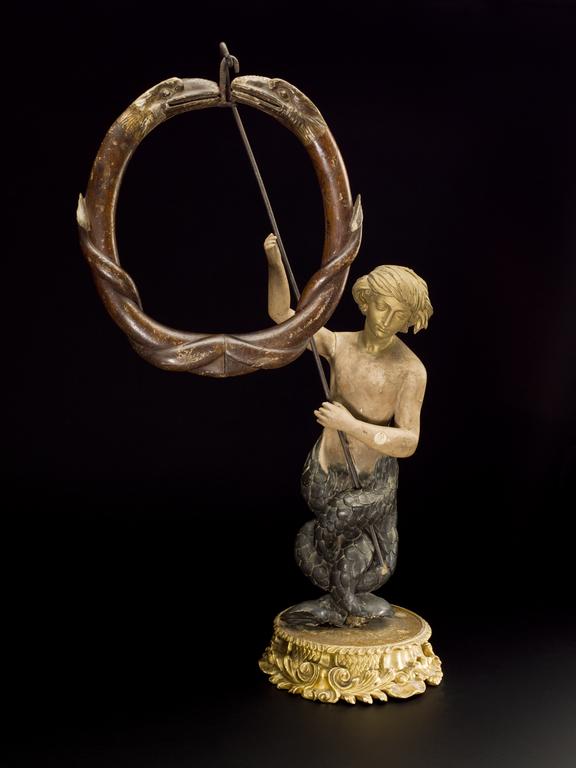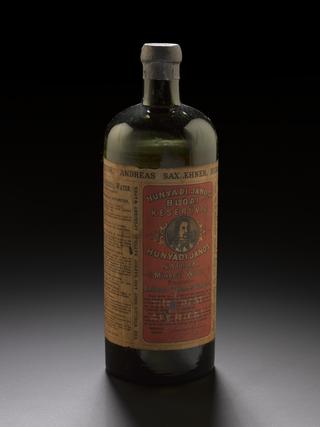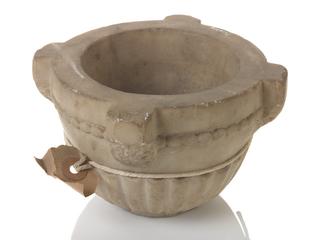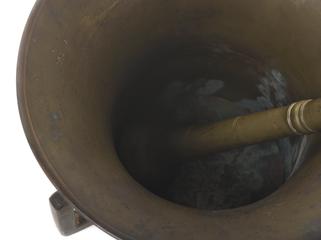
Apothecary's sign of wood and plaster, in the form of a mermaid suspending a snake symbol, European, 1840-1900
It is thought that this sign was used to advertise an apothecary’s shop. The plaster covered wooden statue would have had an iron pole to suspend the snake shaped ring from it. With the head and body of a woman and a fish-like tail, the mermaid has long been a figure of myth and legend.
Before the numbering of street buildings began to become commonplace towards the end of the 1700s, houses and commercial properties were usually known by their name or by the signs that hung over them. This practice continued into the 1900s and in this case medical products might have been indicated as being available in a particular street, ‘at the sign of the mermaid’.
Details
- Category:
- Pharmacy-ware
- Collection:
- Sir Henry Wellcome's Museum Collection
- Object Number:
- A631338
- Materials:
- wood, surface, plaster and pole, iron
- Measurements:
-
overall: 710 mm 230 mm,
snake ring: 320 mm,
- type:
- shop sign





